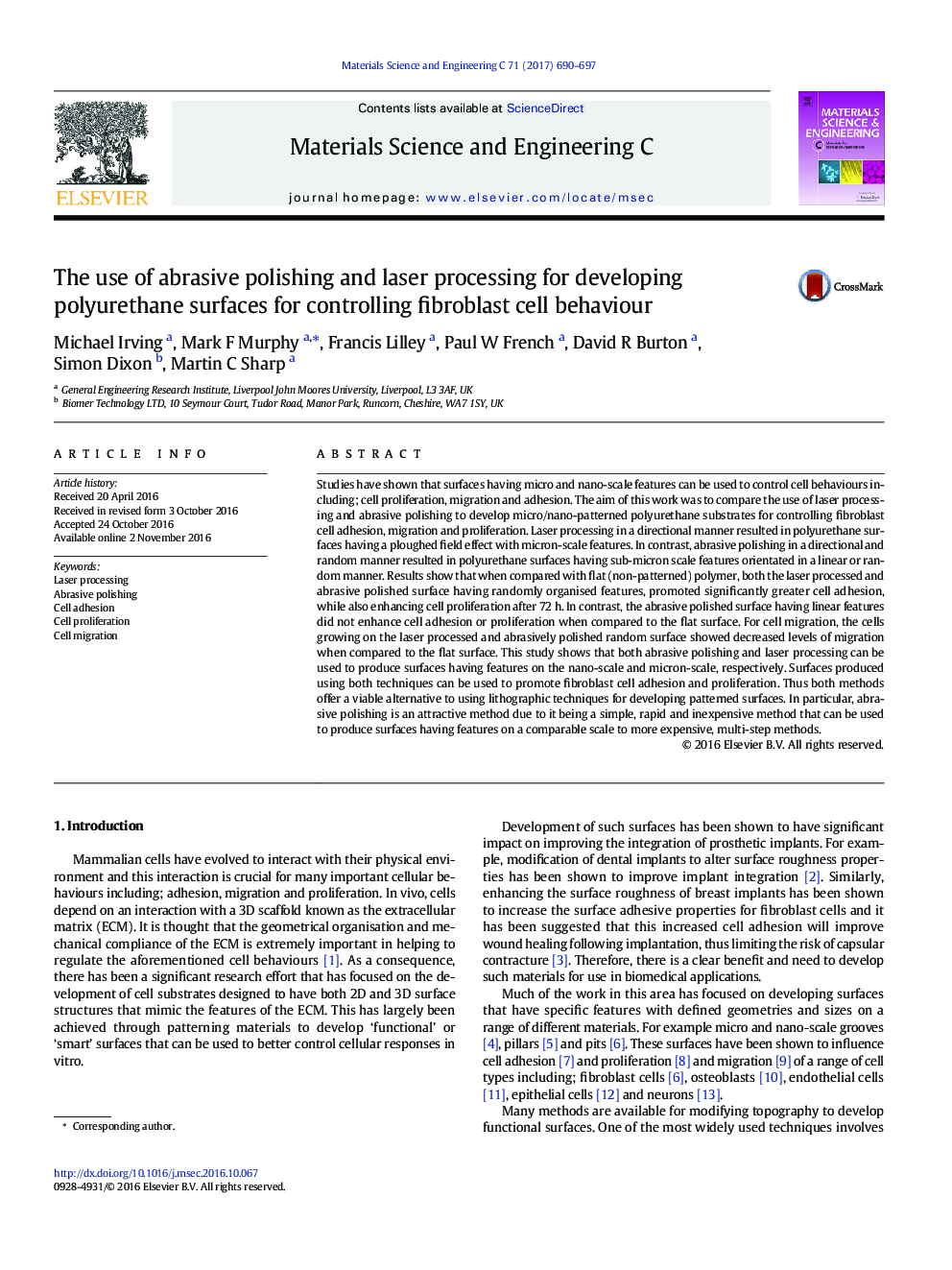| Article ID | Journal | Published Year | Pages | File Type |
|---|---|---|---|---|
| 5434676 | Materials Science and Engineering: C | 2017 | 8 Pages |
â¢Abrasive polishing can generate nano-scratches on stainless steel to cast polymer films for cell substrates/coatings.â¢Introducing fibroblast cells to the polymer surface having randomly organised features enhanced cell adhesion/proliferation.â¢Surfaces generated using laser processing enhanced cell adhesion/proliferation similarly to the randomly polished surface.â¢Cells growing on the surface having directional nano-features did not enhance cell adhesion or cell migration.â¢The work offers potential to develop nano-textured coatings using abrasive polishing methods for biomedical implants.
Studies have shown that surfaces having micro and nano-scale features can be used to control cell behaviours including; cell proliferation, migration and adhesion. The aim of this work was to compare the use of laser processing and abrasive polishing to develop micro/nano-patterned polyurethane substrates for controlling fibroblast cell adhesion, migration and proliferation. Laser processing in a directional manner resulted in polyurethane surfaces having a ploughed field effect with micron-scale features. In contrast, abrasive polishing in a directional and random manner resulted in polyurethane surfaces having sub-micron scale features orientated in a linear or random manner. Results show that when compared with flat (non-patterned) polymer, both the laser processed and abrasive polished surface having randomly organised features, promoted significantly greater cell adhesion, while also enhancing cell proliferation after 72Â h. In contrast, the abrasive polished surface having linear features did not enhance cell adhesion or proliferation when compared to the flat surface. For cell migration, the cells growing on the laser processed and abrasively polished random surface showed decreased levels of migration when compared to the flat surface. This study shows that both abrasive polishing and laser processing can be used to produce surfaces having features on the nano-scale and micron-scale, respectively. Surfaces produced using both techniques can be used to promote fibroblast cell adhesion and proliferation. Thus both methods offer a viable alternative to using lithographic techniques for developing patterned surfaces. In particular, abrasive polishing is an attractive method due to it being a simple, rapid and inexpensive method that can be used to produce surfaces having features on a comparable scale to more expensive, multi-step methods.
